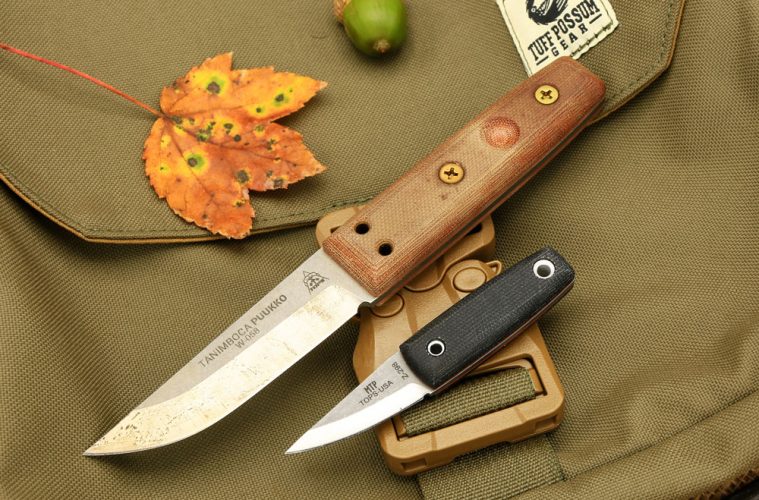WHICH OF THESE POCKET-SIZED TOPS FIXED BLADES IS BEST?
As long as I can recall, TOPS Knives has always been associated with big, heavy duty-sized knives, tactical in the early years and more, well-rounded, outdoorsy in the last decade.
Leo Espinoza and Craig Powell have transformed TOPS Knives to reach the masses. No longer are they just for the tactical crowd.
Two small cutters in particular—the Little Bugger and the Mini Tanimboca Puukko—are paving the way for a new era of TOPS Knives.
LITTLE BUGGER
The Little Bugger was designed by primitive survival skills guru Matt Graham to have a sharp, full-tang fixed blade that can be carried when everything else is left behind. For a knife that weighs in at 2.4 ounces alone, 3.7 ounces with a super-light, multi-purpose sheath, why wouldn’t it be taken everywhere?
The thin, 3/32-inch thick 1095 steel is a slicer. Best to think of it as a razor blade with tan Micarta handles. Simple, streamlined, sharp and, most of all, handy.
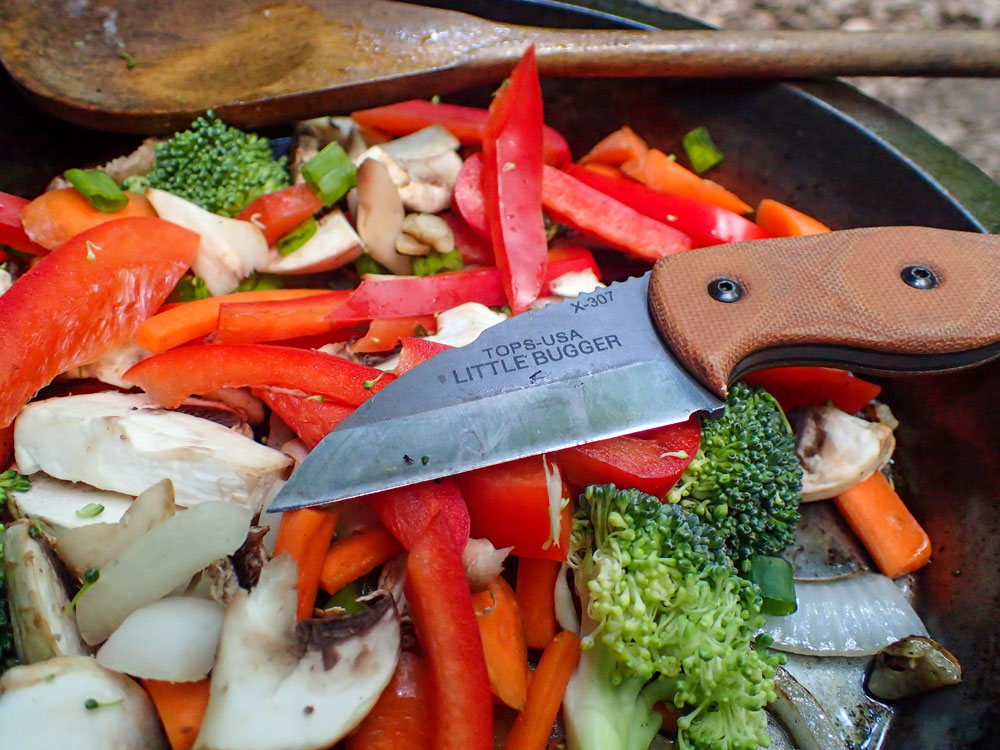
Making a stir-fry in camp was done with the Little Bugger. Slicing with it was similar to using a box cutter, dragging backwards rather than using the belly.
When I received this knife, I was on my way to Alabama to hang out with the Randall’s Adventure and Training survival bunch. Ever since I’ve been a fan of knife and survival magazines, TOPS Knives and Randall’s Adventure and Training school have been synonymous.
The first few articles I ever read were by writer/photographer Jeff Randall while leading the classes through the Peruvian rainforest. He had TOPS Knives on a few occasions. Naturally, when I had a chance to do the same, I had TOPS Knives with me.
Now, years later during a field survival class, I took the TOPS Little Bugger knife to use and lend out to students during the woodcraft skills portion of the arduous class.
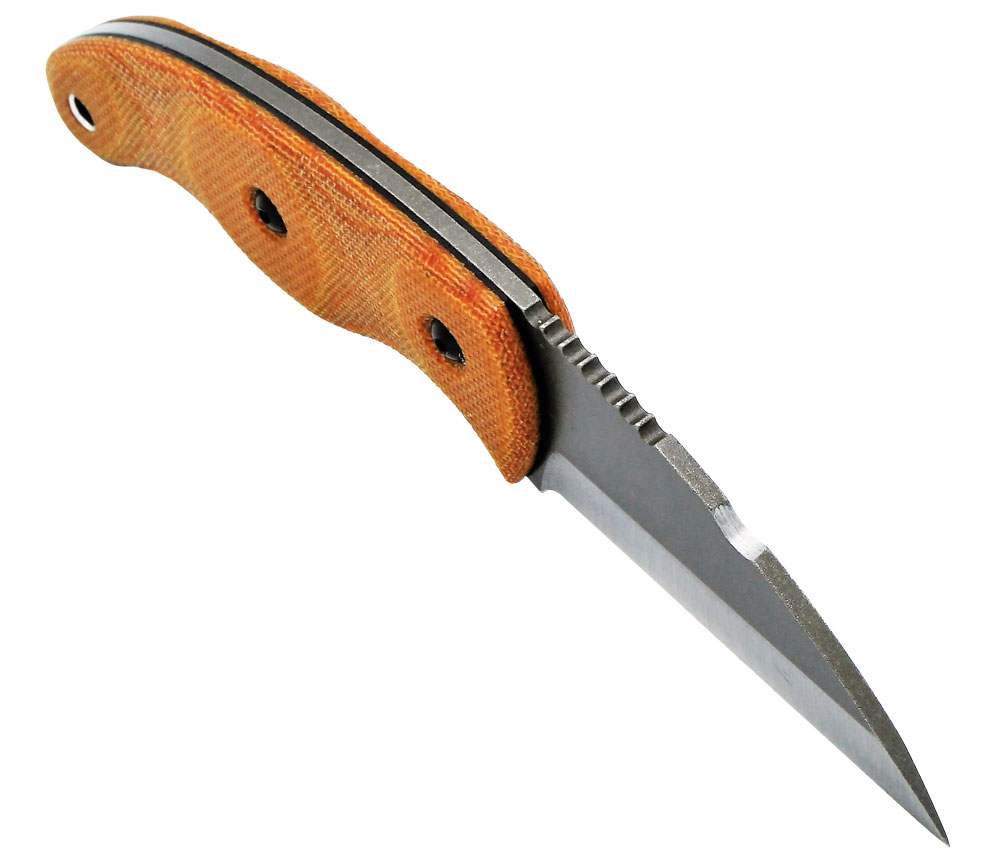
The sheep’s foot style blade of the Little Bugger has a very sharp point perfect for incising animal hide or vegetables for a camp meal. The handle and blade have a gentle continuous curve from the scales to the tip of the blade, reminiscent of a crescent moonlike shape. Tan canvas Micarta scales offer good traction to the handle.
KITCHEN CHORES
The last thing I felt this knife could be is the first thing I made it into: a camp kitchen knife. I went for a backcountry stir-fry in the summer. However, a stir-fry takes less actual cook time in the humid summer heat.
I used my hobo-skillet fastened with a newly carved wooden handle, courtesy of the Little Bugger. Then I sliced broccoli, onions, mushrooms, carrots, peppers, and scallions.
Oh, I almost forgot to mention garlic, which required a number of scores vertically, then horizontally before slicing all the way through. It makes for a very nice dice, which requires a thin blade.
The knife is not the traditional design one would usually use for food, but it worked out just fine. The technique was different when slicing, because the blade was straight.
Most kitchen knives have a curve or belly, which requires a certain technique, but with this style slicing has to be done in a dragging back motion. It was different, but the adjustment was easy.
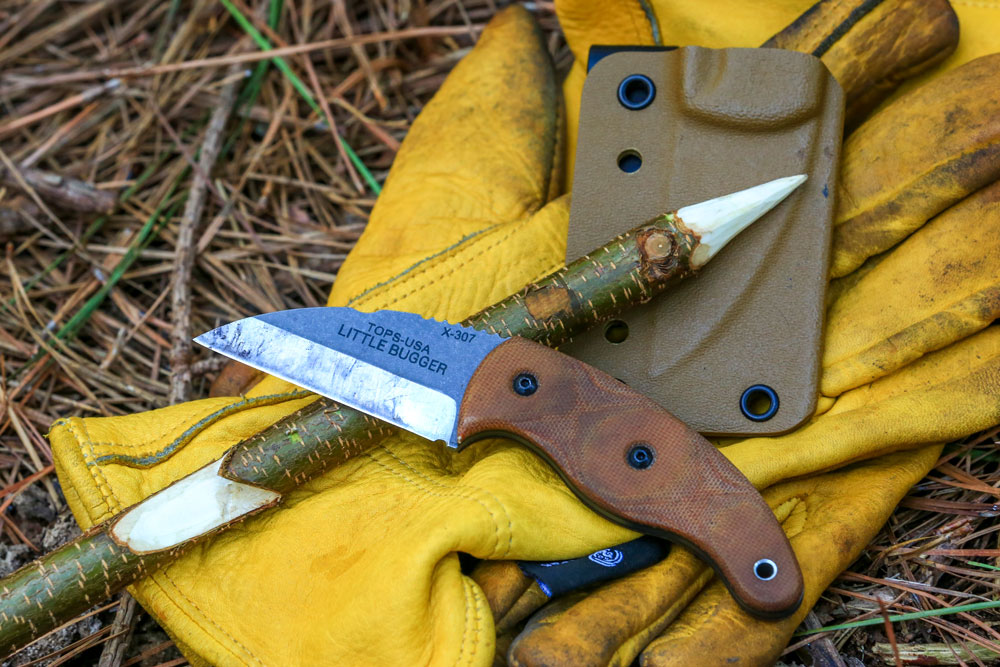
A notch stick was worked on by students with the Little Bugger by TOPS Knives. The longer handle helped when extra leverage was needed to cut into the green wood.
LITTLE BUGGER SPECS
Overall Length: 5.75″
Blade Length: 2.38″
Cutting Edge: 2.38″
Thickness: 0.090″
Blade Steel: 1095 Carbon Steel RC 56-58
Finish of Blade: Tumble finish
Handle Material: Tan canvas Micarta
Sheath: Kydex/injection-molded nylon
Weight: 3.7 oz. (w/Sheath);
2.4 oz. (knife only)
Designer: Matt Graham
MSRP: $120
OTHER TASKS
I had to cut a small diameter sapling for some tongs I was making in camp. I used the Little Bugger to perform a pressure-assist cut, also known as a snap-cut. The green sapling was about 1 inch thick, and even though the blade was only 2.3 inches long, it was enough.
I bent the green witch hazel and applied some tension to it with one hand. Once the sapling was tensioned, I simply put the blade where I wanted it, low where the most tension was, and rocked the blade back and forth. The tension makes the blade slice through.
It’s best to keep tension on the sapling and turn it slightly to help get through all the fibers in the green wood. Sometimes it makes a clean cut all the way through; often it leaves a little bit which can easily be trimmed off using the knife in a reverse grip.
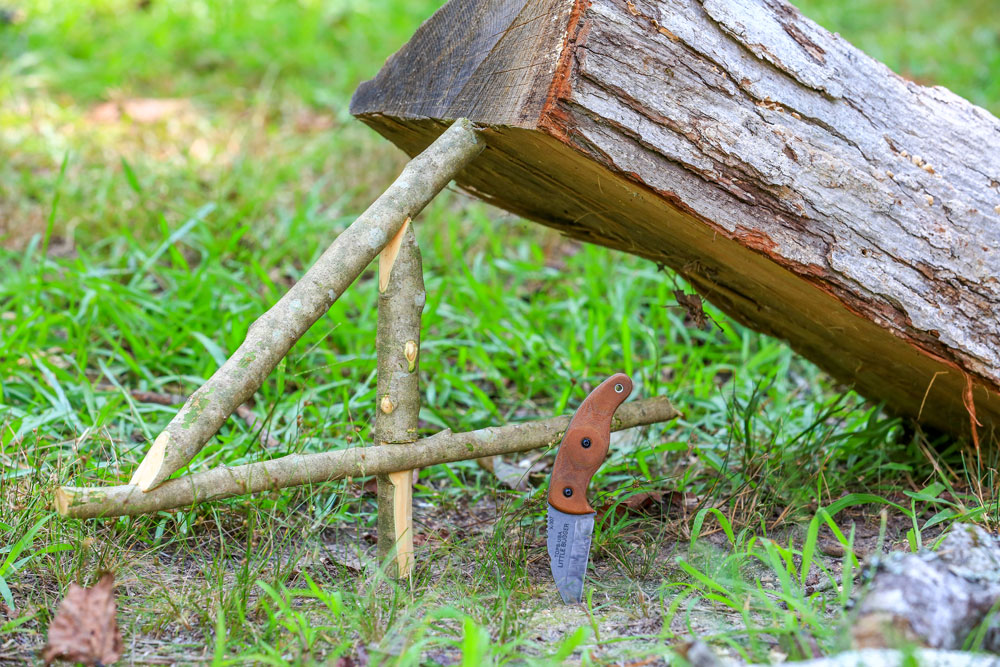
A figure-four deadfall trap made with the Little Bugger. A lot of carving is needed to make this trap and the thin handle was starting to take its toll on the hand.
After that, I needed to clean up the other end, so I used the help of a baton to sheer the green wood exactly where I wanted it. This is called cross-grain batoning and was easy with such a stout, yet thin bladed knife. I carved out about 3 inches of the middle and heat-bent it over the fire to complete the tongs—task done.
I made several quick tent stakes out of green hardwood for demos during the class, which any thin, sharp knife would excel at.
Green wood is quite abrasive on a cutting edge, but the knife held up well without a single sharpening during the “skills day” section of the class. I lent the Little Bugger out to a couple of students to use when their knives got dull.
One made a figure four deadfall trap with it, which was a series of “L7” notches and also did a notch stick, similar to a tri-stick, but with fewer notches. One student cleaned a chicken from start to finish with it.
The Little Bugger proved to be a good utility knife suitable for outdoors crafts while remaining small and handy, always there when it was needed.
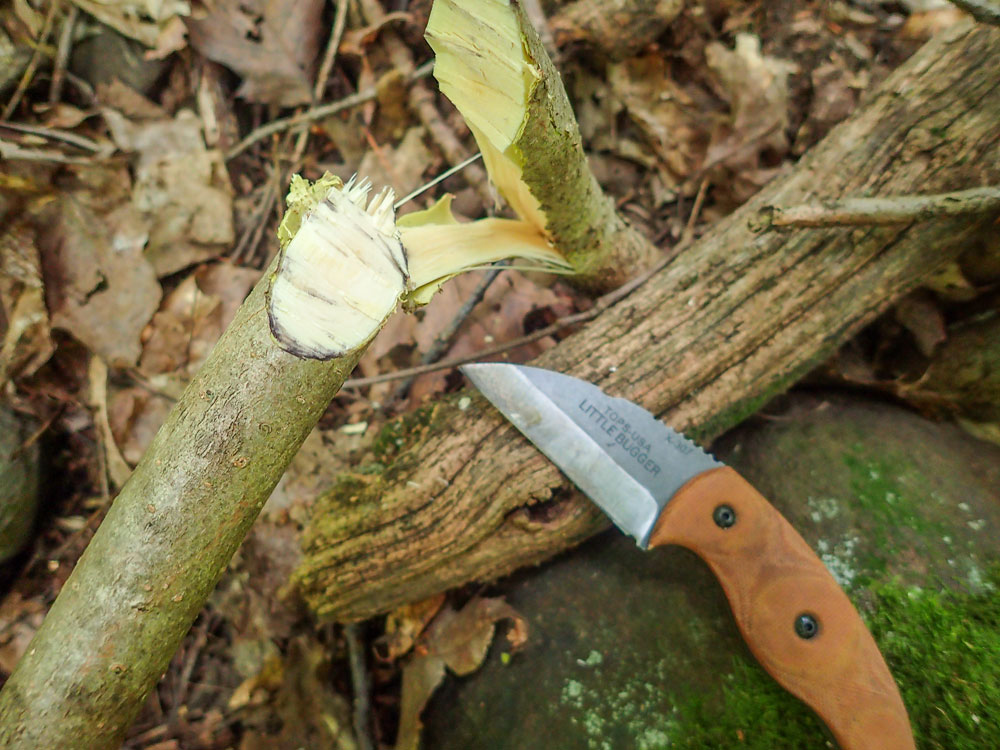
The Little Bugger performed a pressure assisted snap cut on a piece of green witch hazel. Once the sapling was bent, the author rocked the small blade back and forth cutting through the fibers.
MINI TANIMBOCA PUUKKO
Relatively new for 2020 was the follow-up knife for designer Goran Mihajlovic. He also designed the original, full-sized Tanimboca Puukko made by TOPS and released in 2017. A native of Serbia, Goran is a custom knifemaker who now resides in Columbia.
He owns a nature reserve called Tanimboca that houses hundreds if not thousands of species of plants, animals, and insects, hence the name of the knives.
The Mini Tanimboca Puukko is obviously meant to be a detail-oriented whittler. The size alone cries out for a cozying aside a campfire for some whittling. The knife can be held close to the cutting edge in multiple grips.
It is guardless, yet the black canvas Micarta scales (which deviate from the tan ones on the full size Tanimboca) give enough texture, despite the small handle.
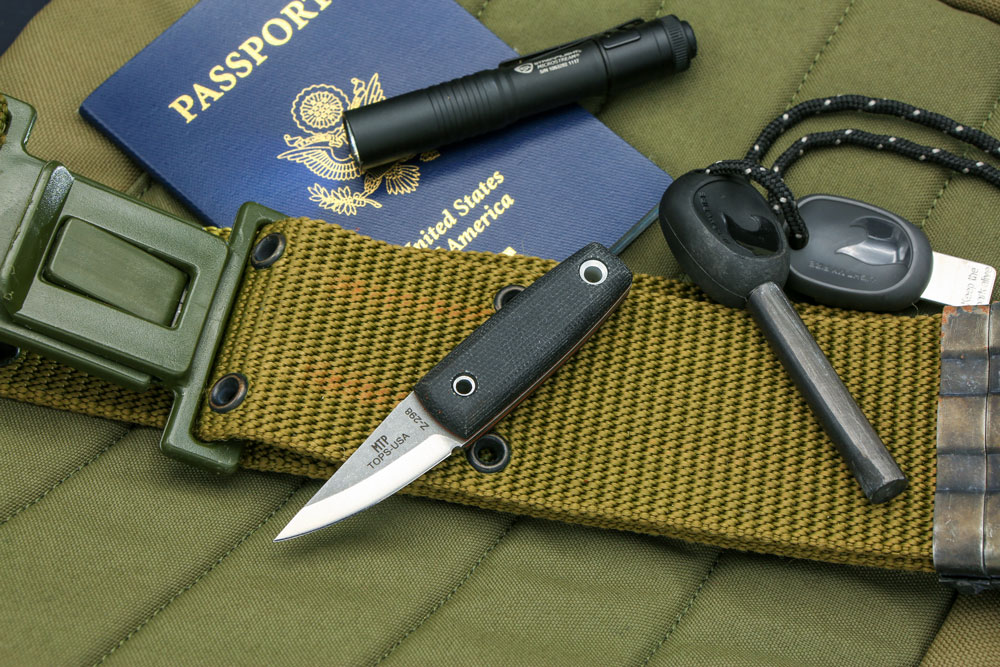
TOPS Mini Tanimboca Puukko neck knife. This is the follow-up and small whittler version of the TOPS Tanimboca Puukko, released in 2017.
With a blade length just a hair over 1 ½ inches long, the TOPS standard 1095 carbon steel has a sharp, 90-degree spine for scraping tinder or a ferrocerium rod or for finishing utensils you’ve crafted. The Mini has an overall length of 4 inches and the blade is 3/32 inch thick.
The brown leather sheath is set up for a tip-down neck carry, but also has a loop that will fit most belts.
USEFUL BLADE SPINE
In the late summer, I stumbled into camp a little later than I anticipated and quickly gathered up some dry kindling for a fire. I had about 30 minutes before it was dark. Pressed for time, I opted to use a piece of fatwood as my tinder.
This was the perfect time to test the Mini Tanimboca Puukko, mainly the spine. I quickly made a pile of fatwood shavings, got my kindling set up for a lean-to fire and added the fatwood to my platform.
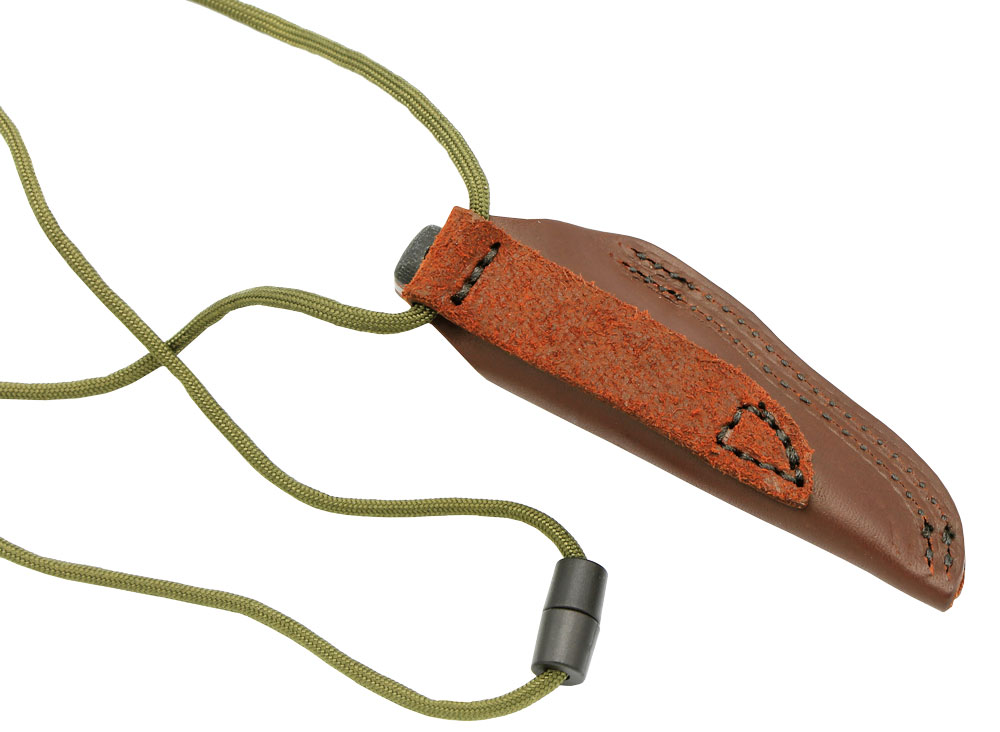
Ready for neck or belt carry, the supplied cord has an easy breakaway cordlock keeping you safe if hung up or grabbed by it.
I used an Uberleben ferrocerium rod, and even though they have an amazing striker that comes with the ferro rod, I wanted to see what the spine of the Mini could do. But I didn’t have a lot of time to play around.
Also, I used the thumb-on-thumb technique, which directs the sparks toward the tinder pile rather than a shower that randomly may catch and ignite. To my surprise the spine shot a nice series of sparks into the pile, igniting it. The dim night sure brightened up after that.
DETAILED CARVING
The next morning, I roughed out a spatula with the mini. This is really what it was intended for: fine, detailed work. The pointy blade tip was able to get into the small spots and curves. Naturally, the blade sliced through wood like a Scandi.
The spine was also a key player in smoothing out the handle, creating some thin, curly wood shavings for tinder in the process.
As for the blade, the small Scandi was stubby but sharp. It could be easily rotated to drill into wood with the super pointy tip.
It’s not good for holding in an icepick grip, as the handle isn’t substantial enough for that. I kept it in a modified fist grip, which only allowed for about a two and a half finger grip.
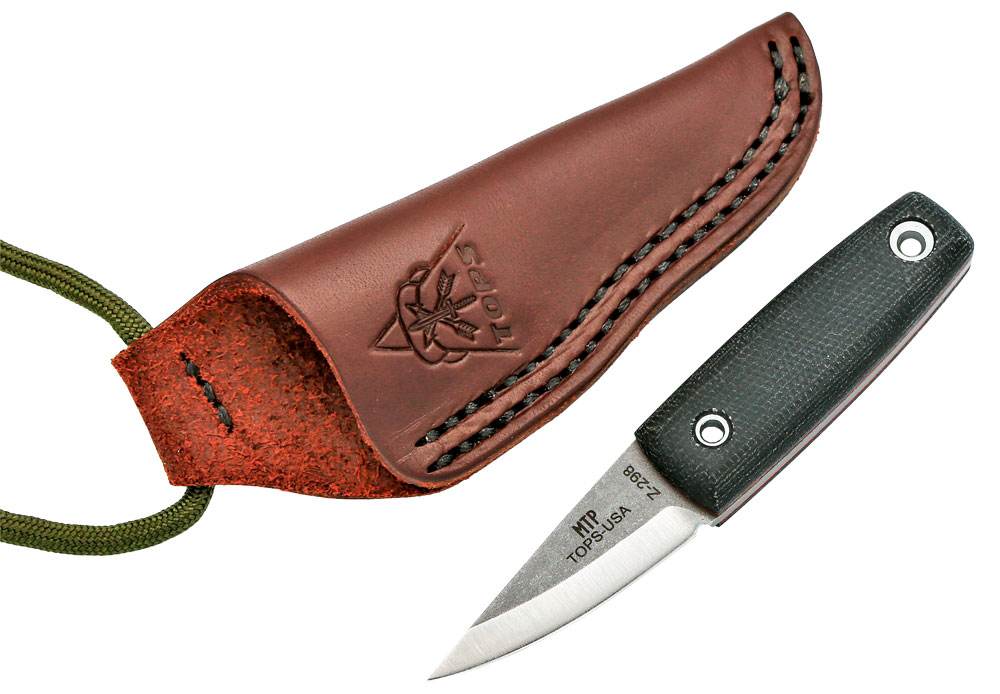
TOPS Mini Tanimboca Puukko neck knife with an attractive brown leather sheath. With a total weight of 2.6 ounces, you won’t even know it’s there.
I favor the chest-lever grip for delicate tasks, not hard, aggressive cutting like it was meant to be used. I find it yields more control and finesse than people give it credit.
In this grip, my entire thumb covers the handle and there was definitely less control than the same grip used with the Little Bugger. This meant that a stronger grip was needed. A stronger grip on a small handle usually means fatigue.
I had a length of 15,000-pound tow strap and wanted to see how well it would slice through. It cut through with a couple of passes, but the smaller handle gave less leverage and control. Bear in mind, this was strong material for any knife.
The Mini served as a utility slicer for the simple reason that it was handy. Cordage, food packages, plastic clam shell packaging, and anything that needed a quick snip I cut with the Mini.
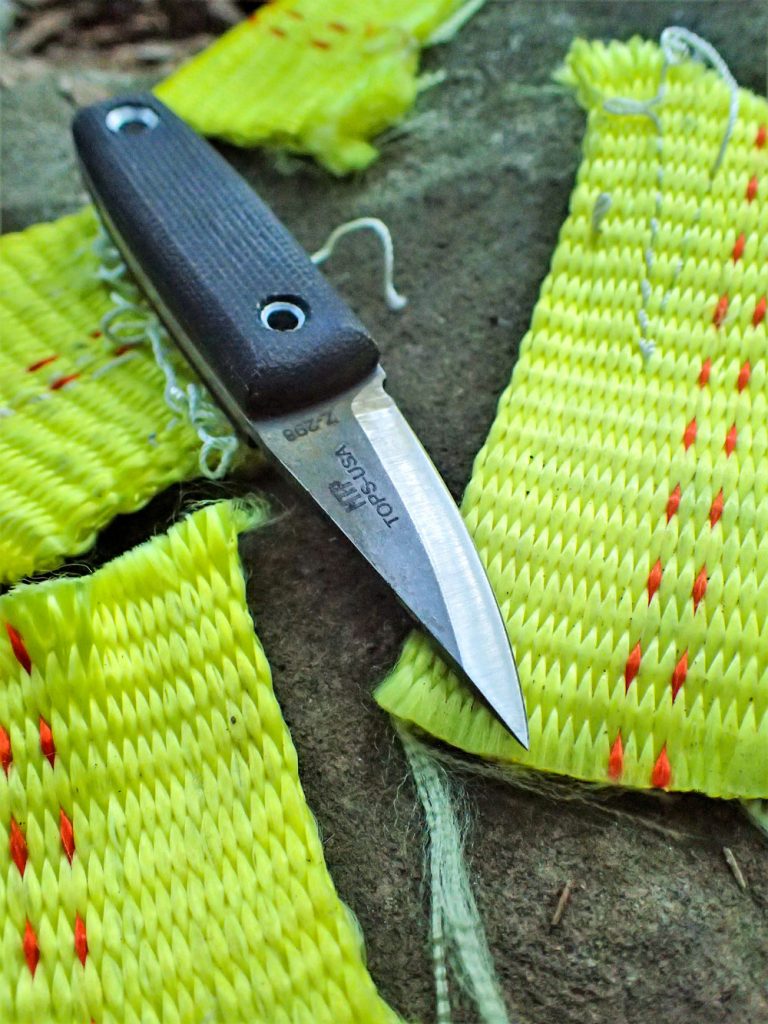
The thin, sharp Scandi blade sliced this 1,500-pound tow strapping material. The larger Tanimboca did the same thing during the test evaluation a few years ago.
MINI TANIMBOCA PUUKKO SPECS
Overall Length: 4.00″
Blade Length: 1.63″
Cutting Edge: 1.63″
Thickness of Blade: 0.090″
Blade Steel: 1095 RC 56-58
Finish: Tumble finish
Handle Material: Black canvas Micarta
Sheath: Brown leather
Weight: 2.6 oz. (w/Sheath);
1.4 oz. (knife only)
Designer: Goran Mihajlovic
MSRP: $90
In Closing
I felt the Mini Tanimboca Puukko really shined and outshined the Little Bugger when it came to fire. The sharp spine and nimble size scream to be a fire companion and it sure has earned a place as one in my book.
I would like to see an extra inch of handle on the Mini Tanimboca Puukko with the same small blade, but then it would be a different knife than Goran intended.
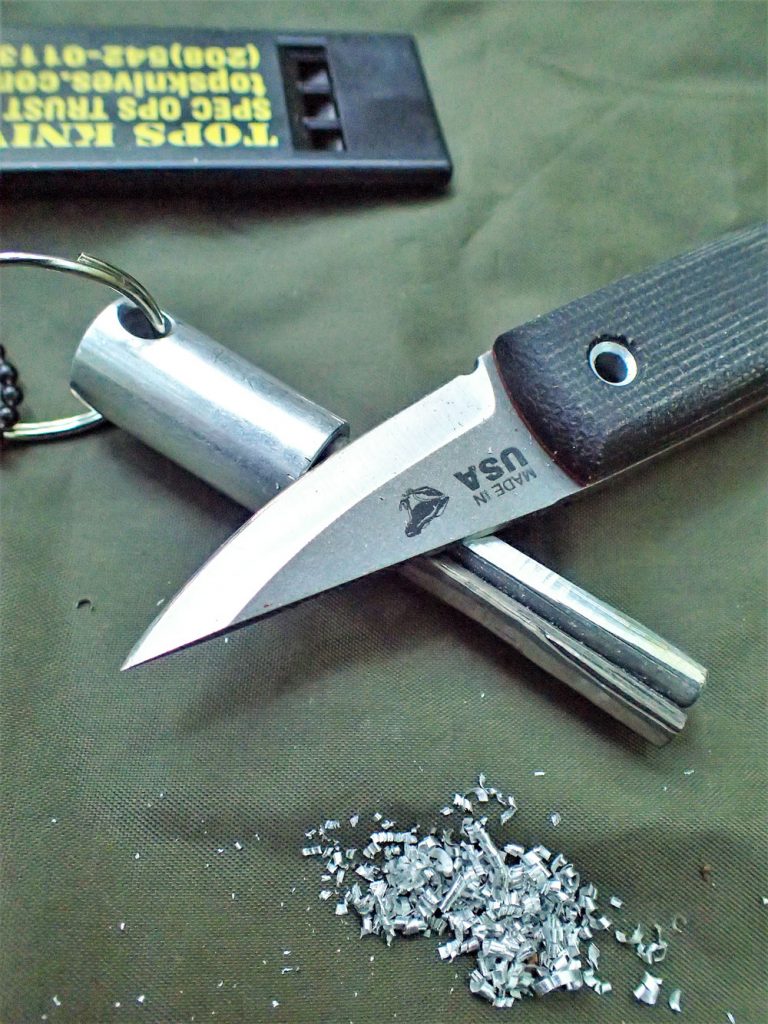
A sharp spine is a prerequisite for a good bush knife. The TOPS Mini Tanimboca Puukko neck knife offers a tinder scrapper and striker in one tool.
The Little Bugger seemed more comfortable to use due to the larger handle and thin grind, making it slice through materials easier.
This made it easily the more versatile choice. I sure wish the Little Bugger came with a sharpened spine, but that is easy to modify with a file.
While the Mini Tanimboca Puukko has the edge—literally—on carving and excelled at fire-craft, these two knives can definitely make the cut. KI
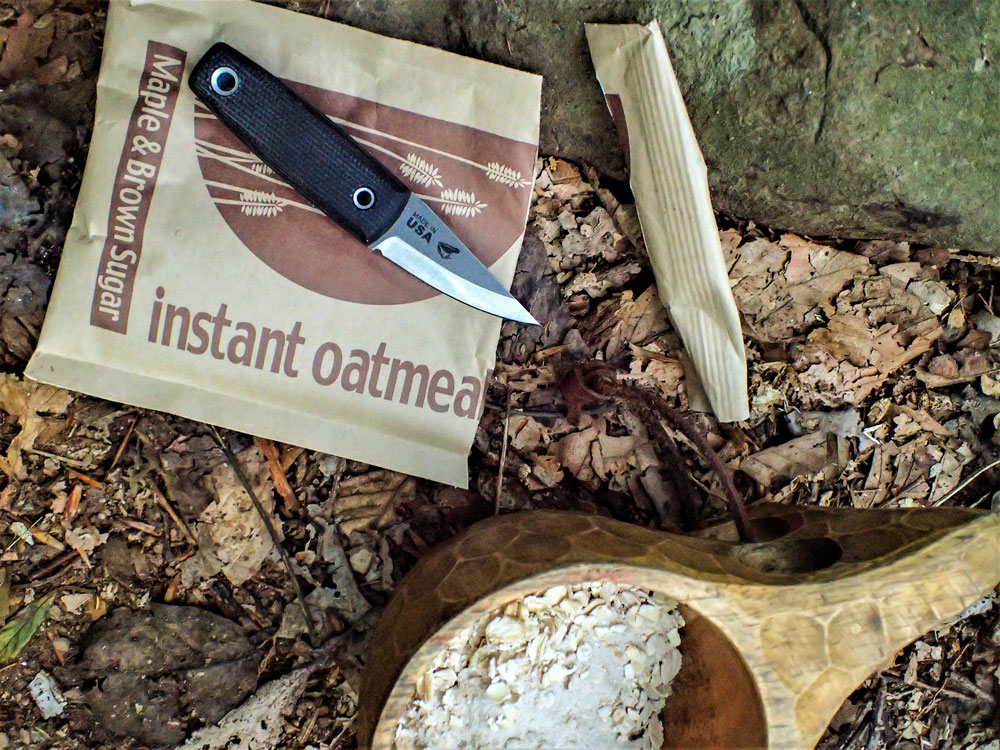
A woods utility knife ready for active duty in the forest or anywhere. Even mundane tasks were performed with the TOPS Mini Tanimboca Puukko, slicing food packages and wood.
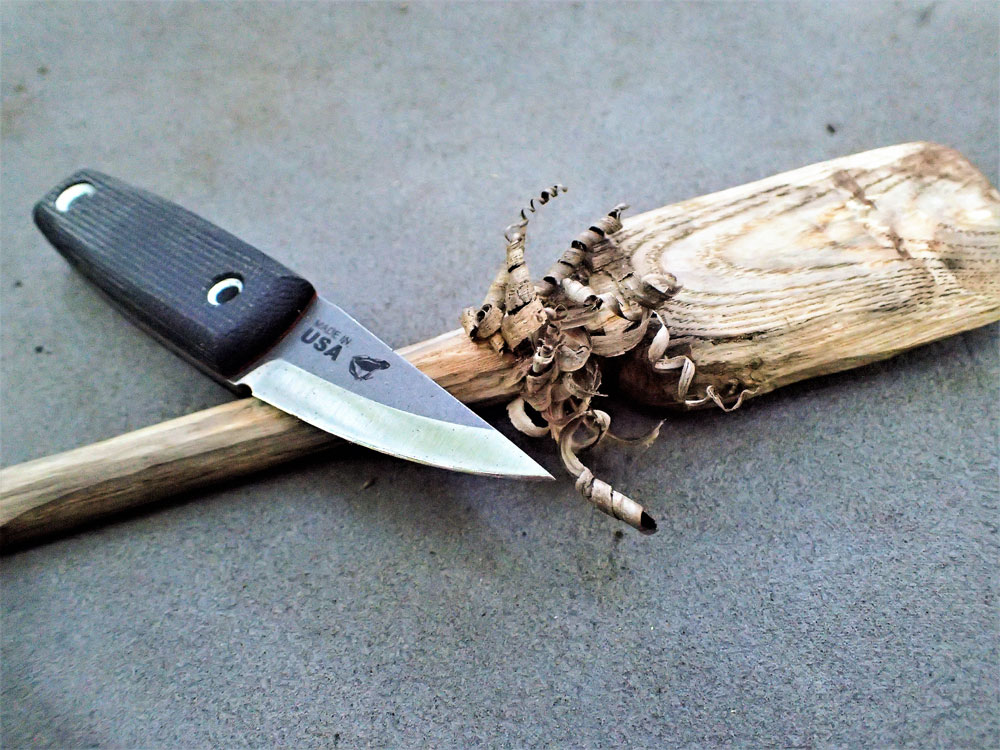
Don’t let the size fool you. The TOPS Mini Tanimboca Puukko is a whittler’s dream, This is a real wood-working tool for your pocket, belt, or neck carry.
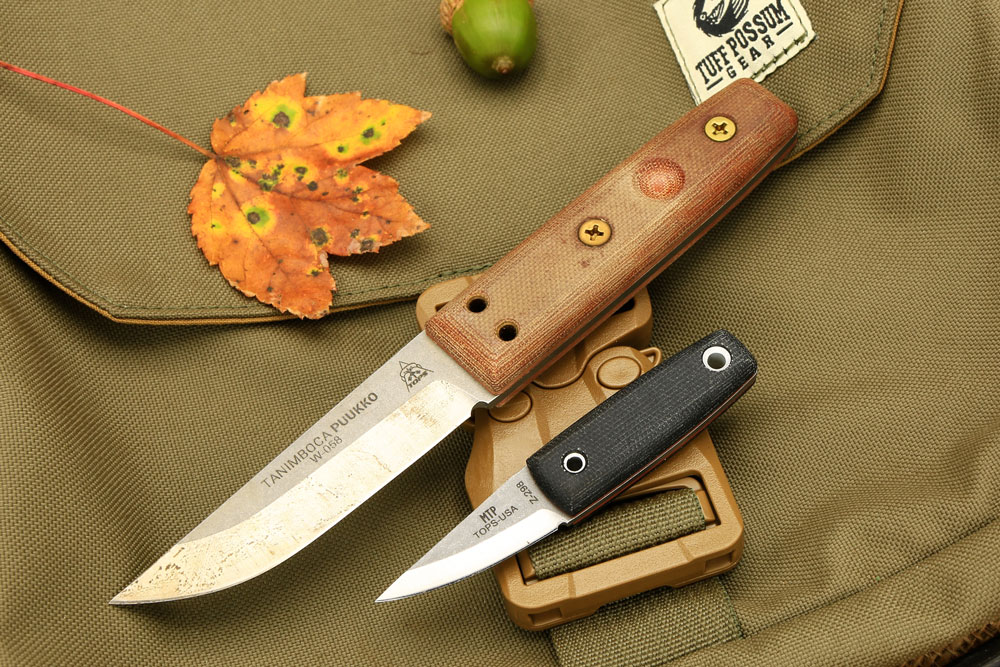
TOPS Mini Tanimboca Puukko and full-sized bigger brother. The original TOPS Tanimboca Puukko was released in 2017. They’d make a good woods pair for any adventure.
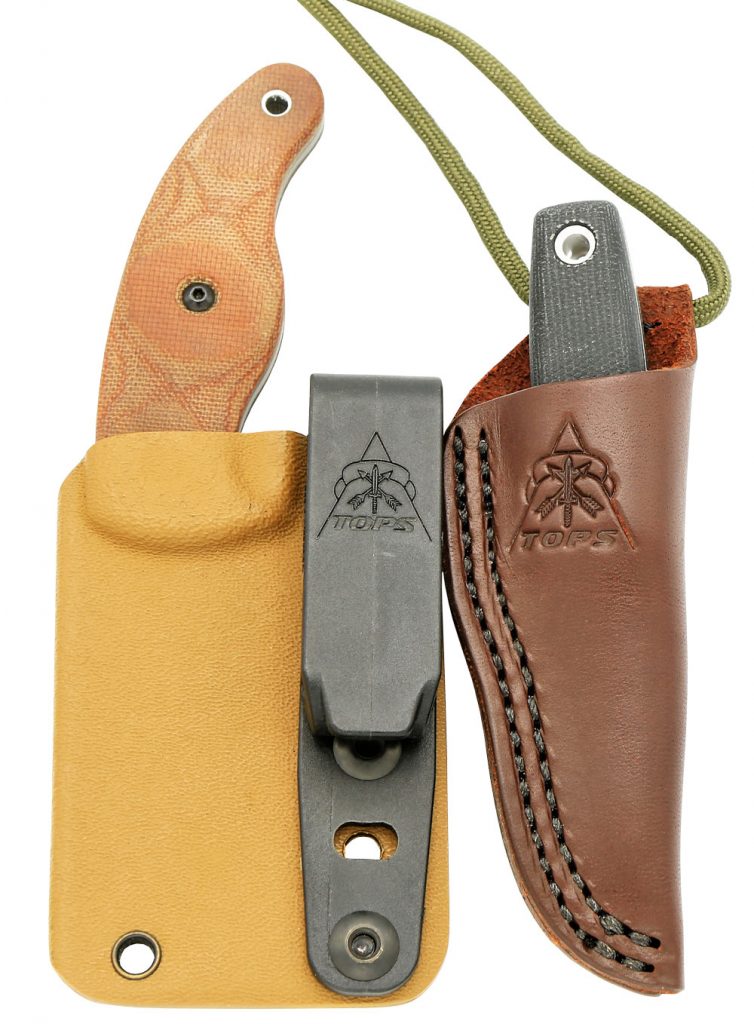
TOPS Knives has really upped its game when it comes to sheaths in the last fi ve years. Designers seem to have leather and Kydex down to a science. Both the Little Bugger and Mini Tanimboca Puukko come with the perfect sheaths for their purpose.
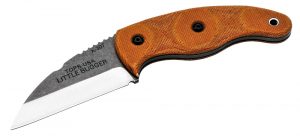
MATT GRAHAM: HEAVY ON SKILLS TO TRAVEL LIGHT
One of the newest designer collaborations with TOPS Knives is with primitive skills and television personality Matt Graham. No stranger to the design game, Matt has now, with the Little Bugger, joined the large group of experts to contribute his creativity.
His lightweight, skills-over-gear mentality may be the reason the Little Bugger is so small and handy, yet practical for travel afoot. Matt broke out on the scene as co-host of the reality show Dual Survival. However, previously he was on a show called Dude You’re Screwed.
More recently, Matt has joined the cast of National Geographic channel’s Live Free or Die and another show he hosts is Bushcraft Build Off Challenge. Hopefully, we will see more collaborations between Matt Graham and TOPS Knives.

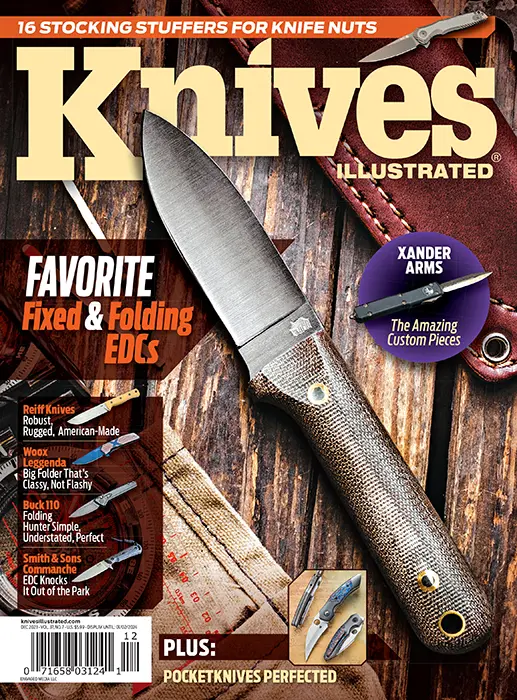 Subscribe / Back Issues
Subscribe / Back Issues